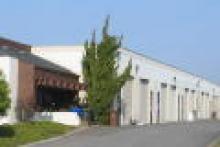
A row of roll-up doors means good things are happening!
As explained in the industrial overview, in dense urban areas we’re “out of land”, and as a result creative sharing of industrial properties is a must.
You’ve probably driven by properties like this and thought nothing of them… however these serve as incubators for larger businesses, stable homes for sole proprietors. A tenant can occupy one “bay” (a section with one roll up door), or combine with neighboring units as they grow.
I devote a separate post to how these buildings can be sold as condominium-ized investment units here.
I find these buildings a very compelling investment for an individual or small partnership with a few million dollars to invest. If your business can occupy part of the building and rent out others that is even better!
The flexibility of sizes, and the smaller size in general really allows for a diverse group of tenants relying on their location to do business, and diversifying income to make reduce the chances of vacancy at the wrong time in a real estate market.
The location of these buildings close to affluent areas saves a business time paying for their employees stuck in traffic, whether they be plumbers, a small bakery supplying other businesses. Some of these buildings can also be destinations for specialty customers, who might be resistant to driving across town. Upholsterers or engravers for example. Also mentioned in a separate post, retail-crossover can be common, with party supply or wine wholesalers often open to the public as well.
Supply is limited by the expense and inconvenience and lost square footage of building multi story versions of the same. The businesses need to be able to drive up to those roll-up doors, and tenants will prefer first floor spaces with natural light from skylights on the roof.
Office space can become a commodity when developers over-bid, and often the new competiing buildings force older buildings into substantial investments - the newer industrial buildings will be of less utility to most potential tenants, and, very often the same spots that might become competition look better as office building sites during the strong markets when construction financing is available.
Larger investors, (like retirement funds etc), don’t prefer small tenants… reducing the sources of capital that it would take to build competing properties!
I love these buildings.
See also blog entry: (coming soon - “what it takes to be a landlord”)